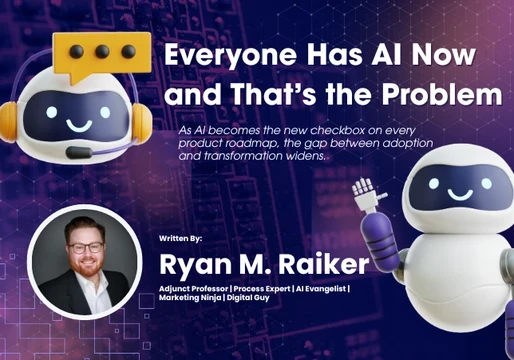Artificial intelligence is rapidly transforming our world, influencing everything from healthcare and finance to entertainment and self-driving cars.
However, the inner workings of many AI systems remain shrouded in mystery, and many simply reap the benefits of AI systems like Large Language Models (LLMs) but don't understand how they actually work. This lack of transparency can be a major hurdle for users trusting and understanding AI, especially when it comes to its ethics.
Enter Explainable Artificial Intelligence, otherwise known as XAI. XAI bridges the gap between complex AI systems and human users, making AI models more transparent and interpretable while paving the way for responsible and trustworthy development of the technology.
In this article, we'll be delving deep into the meaning of Explainable A, exploring how it works and why it's important in 2024.

What is XAI?
XAI, short for Explainable Artificial Intelligence, is a set of tools and frameworks designed help you understand outputs and predictions made by machine learning models. Making artificial intelligence explainable is particularly important in complex AI systems, where decision-making processes can be opaque and difficult to interpret.
XAI makes it easier to debug and improve model performance, and help others understand your models' behavior. It's an ongoing effort to bridge the gap between complex AI systems and human users. By making AI more transparent and understandable, XAI paves the way for responsible and trustworthy AI development.
Why is XAI important?
XAI is important for building trust and ensuring the responsible development of artificial intelligence. As AI technology becomes more integrated into our day-to-day lives, XAI is likely to be crucial for a number of reasons:
Trust and Transparency
AI systems, especially complex ones, show users their final answer but not the process behind the results. This lack of transparency can make it difficult for users to trust AI, particularly for important decisions.
Without understanding how an AI model reaches a decision, it's difficult to hold anyone accountable for its outcome. XAI aims to help users understand how AI arrives at its conclusions, fostering trust and acceptance. This transparency allows for scrutiny and puts safeguards in place to ensure AI systems are used responsibly.
Addressing Bias
AI models learn from data. If the data used to train the model is biased, the model itself will likely be biased. For instance, an AI resume screener trained on resumes from a male-dominated field might undervalue qualifications from female candidates.
The algorithms used to build AI models can also introduce bias early on. Certain algorithms might favor specific features in the data, potentially overlooking relevant information or amplifying existing biases.
By analyzing how AI models arrive at decisions, XAI can pinpoint features or data points that could be unfairly influencing the outcome. XAI can quantify the influence of biased features on the final decision. This helps us understand the severity of the bias and its potential impact on different groups. For example, XAI might reveal that an AI loan approval system is giving preference to an applicant's zip code, which can be a proxy for race.XAI can also be used to perform fairness checks on AI models. These checks compare the model's performance across different demographics, helping to identify and address potential biases.
Debugging and Improvement
Traditional software debugging involves examining code to identify errors. However, complex AI models, especially deep learning models, function differently. They learn from data patterns, making it challenging to pinpoint the exact cause of errors or unexpected behavior.
XAI can reveal features in the training data that are significantly influencing the model in unintended ways. For instance, an image recognition model might be misclassifying images due to a bias towards a specific background color. By analyzing explanations generated by XAI methods, developers can gain insights into the model's internal workings and identify potential weaknesses. This can help them refine the model architecture or training process. XAI can also help to pinpoint specific data points or decisions where the model is performing poorly. This allows developers to focus their efforts on debugging these specific areas.
XAI goes beyond just debugging existing issues; it also actively helps improve AI models. By identifying areas where a model lacks data or where the data might be misleading XAI can guide the collection of additional, higher-quality data to improve the model's performance. In understanding how the model responds to changes in features or training parameters, developers can make targeted adjustments to improve accuracy and generalizability. XAI allows developers to leverage human expertise alongside AI models. Explanations can be used to identify areas where human intervention can improve the model's decision-making capabilities.
How does XAI work?
AI, especially machine learning, can feel like magic. You give it data, it provides an answer, but users don't understand how the result was reached. This is where XAI, or Explainable AI, comes in.
XAI sheds light on the inner workings of AI models and helps us understand how these models arrive at their decisions and outputs through a range of techniques including:
Feature Attributions
Feature attributions are a cornerstone of XAI, offering a way to understand how individual features in an AI model contribute to its final decision. For example, in determining what an image is feature attributions highlight the image features, pixels or regions that most influenced the decision.
The main techniques XAI uses for feature attribution are LIME (Local Interpretable Model-agnostic Explanations) or SHAP (SHapley Additive explanations). LIME creates a simplified model around a specific prediction. It then analyzes how altering features in this local explanation impacts the model's output. By observing these changes, LIME estimates the importance of each feature in the original prediction. SHAP distributes the credit for a prediction among all the features. It imagines different orders in which features could have been presented to the model and calculates how much each feature contributes to the final outcome based on these hypothetical scenarios.
Feature attributions can help identify features that are misleading the model or having an outsized influence on its decisions. This can be crucial for debugging and improving the model's performance. If certain features consistently have a high attribution score for negative outcomes for a particular group, it might indicate bias in the model's training data. Feature attributions can be a starting point for investigating and mitigating bias. By understanding which features matter most, users can gain insights into the model's reasoning behind a particular decision. This can be helpful for building trust in the AI system.
Decision Trees
Decision trees are a fundamental concept in machine learning, particularly for classification tasks. They're a powerful XAI technique because they offer a clear and easy-to-understand visualization of how an AI model arrives at a decision.
The decision tree is constructed using a training dataset. The algorithm splits the data into subsets based on the most important feature that best separates the data points according to what the model is trying to predict. At each split, the algorithm chooses the feature that best divides the data into distinct categories that relate to the target variable. This process continues recursively until a stopping criteria is met, like reaching a certain level of purity, meaning all data points in a branch belong to the same class, or exceeding a maximum depth for the tree.
 Once the tree is built, new data points can be classified by following the branches based on the feature values. At each branch, the data point is compared to the splitting rule, and it's directed down the left or right branch depending on whether the condition is met. The final leaf node reached represents the predicted class for the new data point.
Once the tree is built, new data points can be classified by following the branches based on the feature values. At each branch, the data point is compared to the splitting rule, and it's directed down the left or right branch depending on whether the condition is met. The final leaf node reached represents the predicted class for the new data point.
A major strength of decision trees is their transparency. Decision trees are relatively simple to understand and implement, even for people without a machine learning background. The tree structure visually depicts the decision-making process, making it easy to understand the logic behind the model's predictions. This makes them a good choice for beginners or when clear communication of the model's reasoning is essential.
Counterfactual Explanations
Counterfactual explanations are like asking "what if'' questions to understand an AI model's reasoning. They explore how changes to specific aspects could have altered the outcome. This helps users gain insights into the model's decision-making process and limitations.
Counterfactuals allow users to probe the model's reasoning by virtually altering input features and observing the predicted outcome changes. This helps users to understand which features are most critical for the model's decision and how sensitive the outcome is to these features.
The ‘nearest neighbors’ method identifies data points in the training data that are similar to the instance being explained. By analyzing how these neighbors were classified, we can understand how slight changes might affect the outcome for the original instance. Whilst Rule-based methods involve simulating changes to AI rules within the model and observing how the outcome is affected.
How to use XAI?
There are two main approaches to using XAI, depending on which model you are using.
Pre-hoc XAI involves selecting AI models that are understandable by humans. These are often simpler models, like decision trees, where the logic behind the decisions is easy to follow. In this technique there is transparency from the start, users understand how a model works without needing additional explanation techniques. But simpler models might not be as powerful or accurate as complex ones for some tasks.
Post-hoc XAI applies to situations involving a complex model, or when you want to understand a specific decision made by any model. Here, XAI techniques come into play to explain after the decision is made by the ai. Feature importance highlights the data points that most influenced the model's decision. Whilst Local Interpretable Model-Agnostic Explanations (LIME) creates a simpler model around a specific prediction to explain why the main model made that choice. Post-hoc XAI is applicable to more models but may be less initiative than pre-hoc XAI.
As AI models become more complex, new XAI techniques will be developed to provide deeper and more comprehensive explanations. The ultimate goal is to create a future where AI and humans can work together seamlessly, with humans understanding and trusting the decision-making processes of AI systems.







Comments ( 0 )